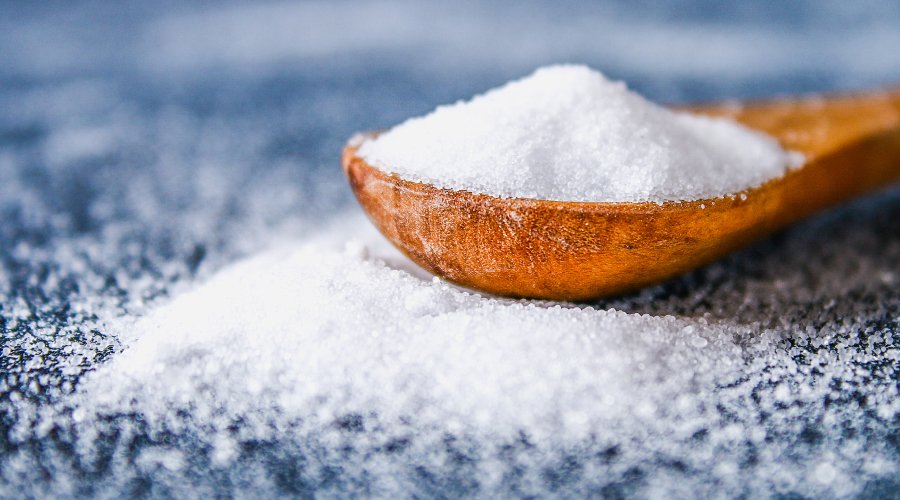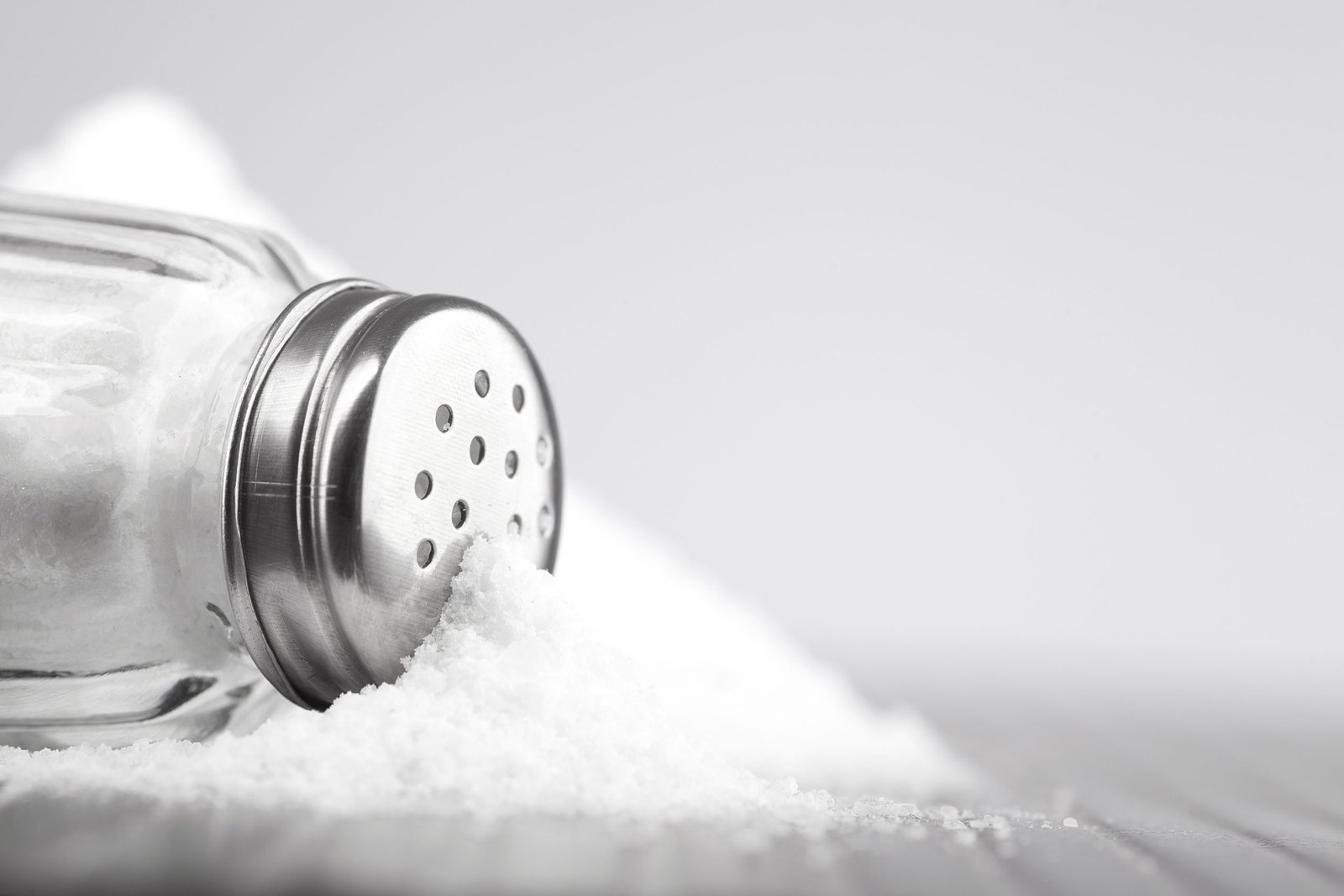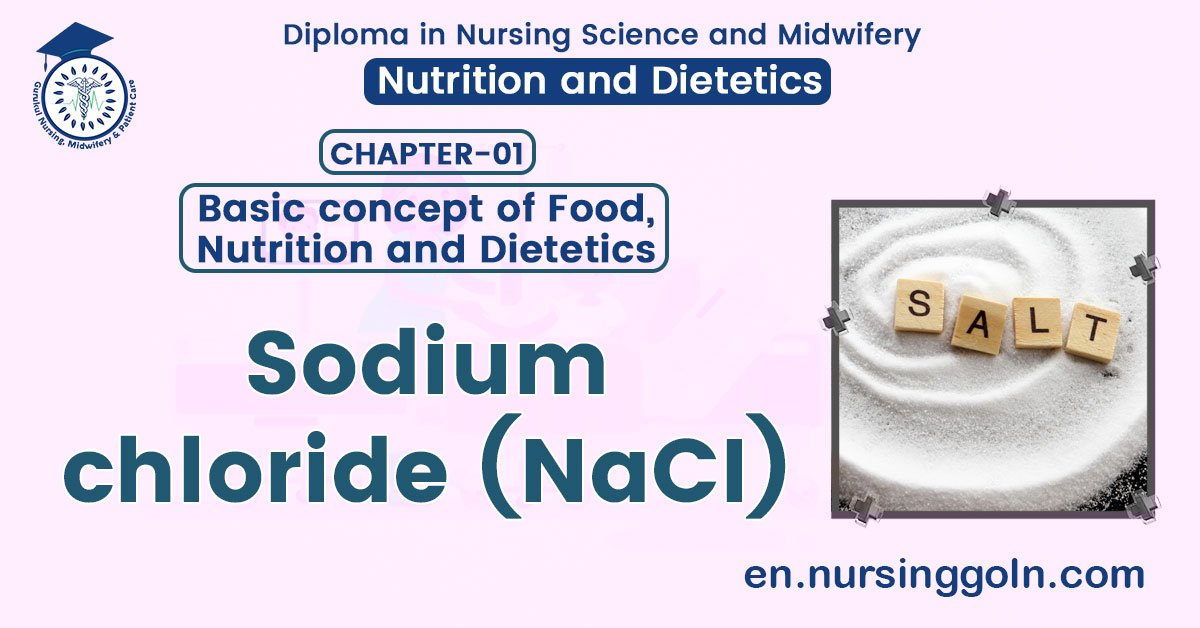Sodium chloride (NaCI) – This book covers the entire syllabus of “Nutrition and Dietetics” prescribed by BNMC-for all Diploma in Nursing Science and Midwifery students. We tried to accommodate latest information and topics. This book is examination friendly setup according to the teachers’ lectures and examination’s questions. At the end of the book previous university questions are given. We hope in touch with the book students’ knowledge will be upgraded and flourished. The unique way of presentation may make your reading of the book a pleasurable experience.

Sodium chloride (NaCI)
All minerals except sodium-chloride (NaCl) are usually present in sufficient amounts in a well-balanced diet. Sodium -hloride is the only mineral which is taken in more or less pure form in addition to the amount present in natural foods. The loss of sodium-chloride may be about 2-5 gm per hour of very hard-work or 10-20 gm per day.
Heat cramps may be prevented by taking 10-20 gm per day by adding Nacl (0″3-0.5%) to drinking water. Drinking pure water without replacing the salt-loss aggravates the deficiency.
(Ref: T. K. Indrani/1/52)
Excess consumption of NaCl causes:
- Increases blood pressure in hypertension patients.
- Oedema
Sodium-chloride intake and excretion:
1. A healthy adult excretes daily in urine about 10-15 gm sodium-chloride.
2. All this is derived from the salt taken in food.
3. Sodium-chloride is also excreted in sweat.
4. During excessive sweating in hot climates, while doing hard work, the loss of sodium chloride in sweat may vary from 10-20 gm daily.
5. During fasting or on salt free diets, the excretion of chlorides in urine may be decreased and only
a trace of sodium-chloride may be found.
6. Absence of sodium chloride in urine is an indication for adding more sodium chloride to the diet.
7. Sodium-chloride is stored in the subcutaneous tissue.
8. During sodium-chloride deprivation, the store is used up.

(Ref: T. K. Indrani/1/52)
Requirement of sodium chloride:
Sodium -hloride requirements depend on the climate and occupation. Foods of animal origin contain more sodium-chloride than those of vegetable origin.

(Ref: T. K. Indrani/1/56)
Read more:
